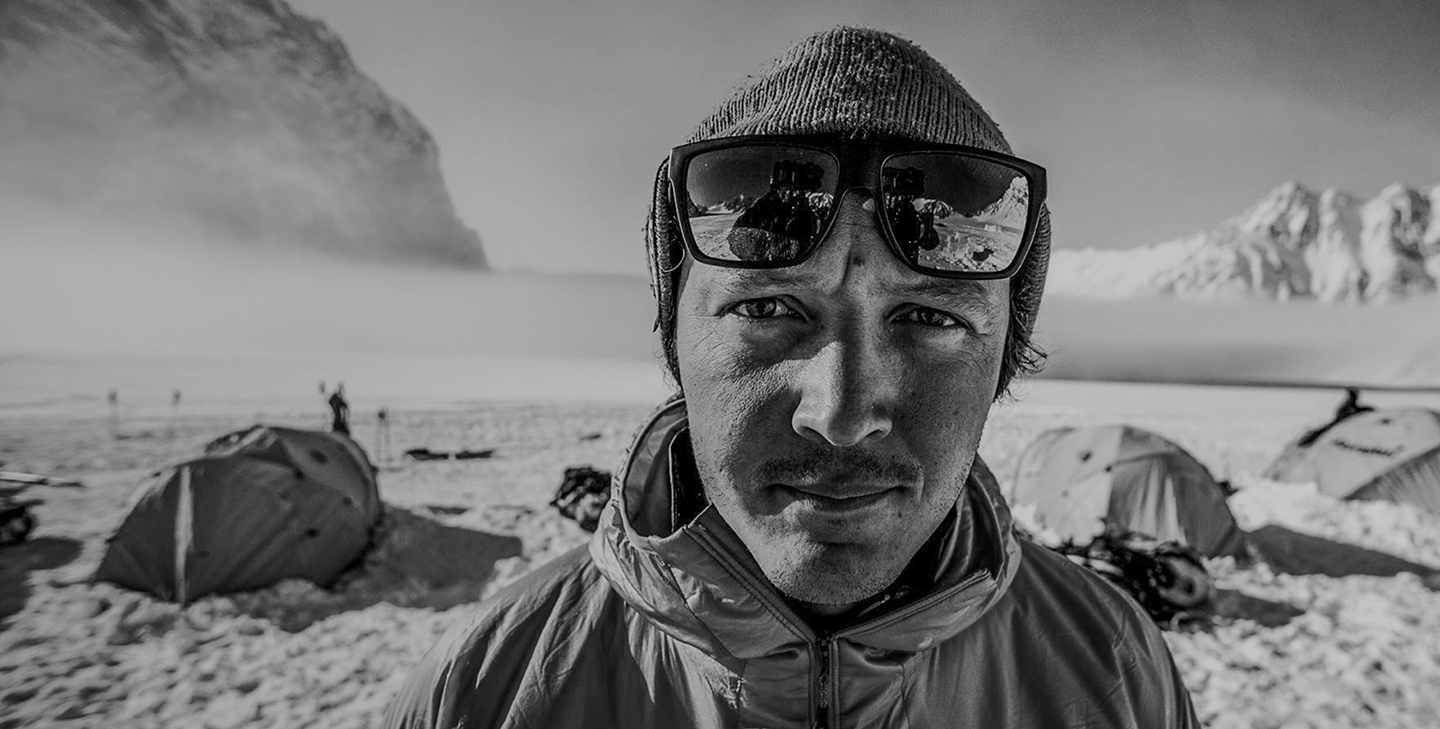Everything looked good. We had ridden the upper part of the descent, where the crevasses were open but visible. When we reached the lower section, much steeper and with seracs hanging over us, a compact lay of snow was sitting upon a much softer weak layer. The whole slope was extremely unstable. Andreas and I were really scared, but already committed.
We had three options: climb back up on foot (suicidal given the terrain configuration and unstable snowpack), ride as quick as we could without roping up (and risk setting off a slab), or riding roped-up slowly (increasing our exposure to serac fall). No alternative was ideal as each offered clear benefits and risks. We decided to continue our descent roped up. We had an 80m rope and descended slowly, taking turns placing protection. Our situation was not very reassuring, especially given our exposure to serac fall, but this still seemed less risky than being caught in a slab avalanche. It took us 4 hours to descend, scared to death with huge seracs looming overhead just waiting to fall…
I think that we went through all of the necessary steps ahead of time to make a proper assessment. Andreas had ridden the north face of the Aiguille du Midi the day before, which is the exact same aspect, and conditions were perfect. We were unfortunately only able to assess how truly dangerous the snow conditions were midway down the descent, at this particular spot. One week later, a group made the very same descent without roping up, and nothing happened. As is often the case in the mountains, sometimes you make a decision wondering whether or not you’re just being paranoid. In hindsight, I think we made the right choice that day.
It took us a long time to make our decision since there were real consequences.
Andreas and I weighed the advantages and drawbacks, evaluated each potential situation, and the probability of an accident, but one thing was certain: we both agreed on the strategy to apply.
When you are used to riding with someone, you know how the other person reacts, and you share a similar approach to the mountains. I really like that about Andreas: he is known for taking huge risks and yet he leaves nothing to chance. If he has the slightest doubt, he pulls out the rope. You should not be afraid of being too careful; never let what others think influence your decisions! When you have a bad feeling, listen. I never head into the mountains to try to prove something to someone else; I always head into the mountains simply to enjoy myself.
